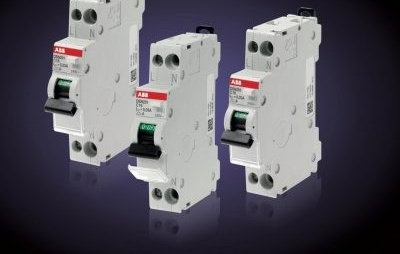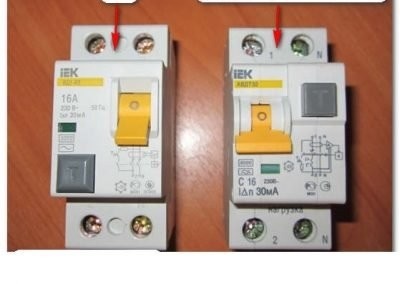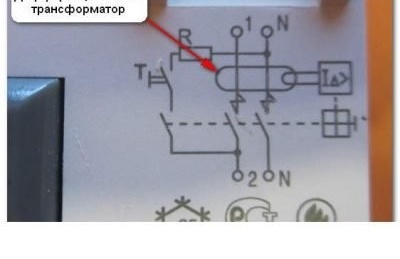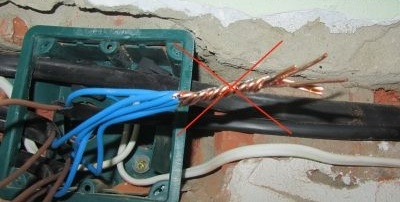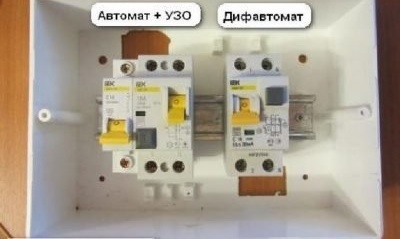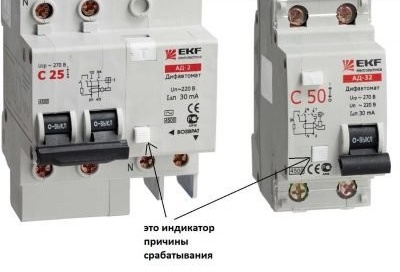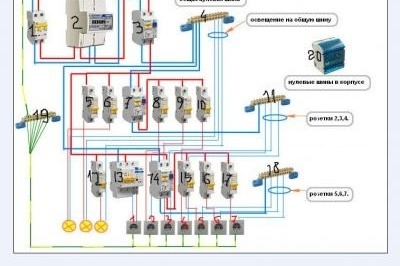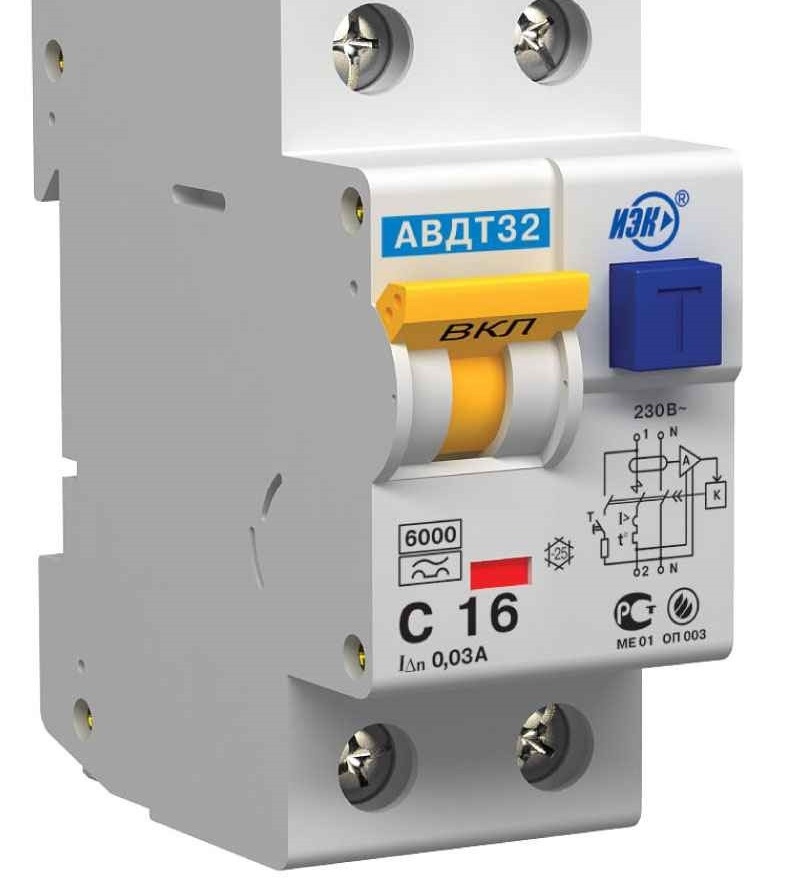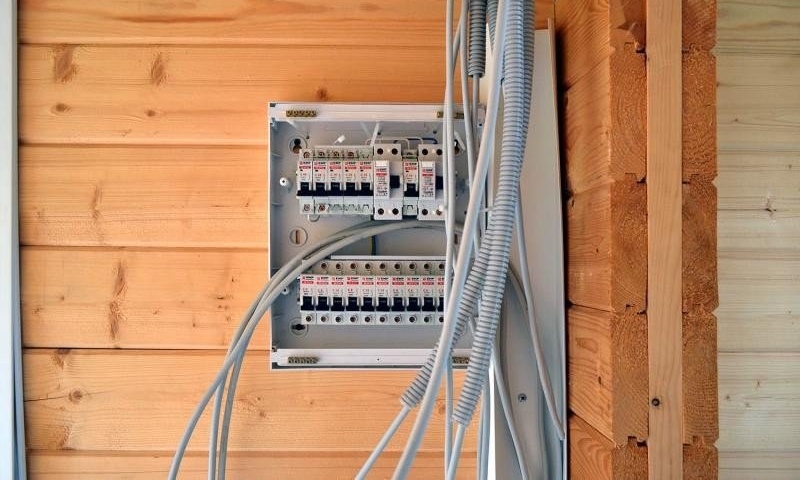RCD and difavtomat: the main differences
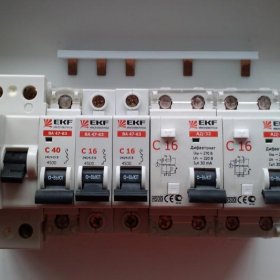
The list of protection devices to make the operation of electrical networks safe is quite small. But even in these “three pines” we sometimes manage to get lost. In particular, many ordinary people do not have a clear idea of how the residual current circuit breakers (RCDs) differ from differential machines and what the purpose of these devices is in general. Let's clarify this question.
Content
What is an RCD and a differential machine
In order to deal with protection devices once and for all, one should list all possible emergency situations that may occur during operation of the power supply network. If you do not take into account the relatively harmless troubles like power surges, then this list will not be so big:
- Overload.
- Short circuit (short circuit): both of these phenomena are accompanied by the flow of current with a greater force than the wiring can withstand (in the second case, the current is called super high). Due to excessive heating, the wires burn out. To protect against such troubles, fuses were used earlier - fusible jumpers, which in case of exceeding the current strength burned out first, thus disconnecting the protected circuit. Today, instead of them, automatic circuit breakers (VA) are used, which have electromagnetic and thermal releases. If the current flows above the rated current, this mechanism disconnects the circuit, but after eliminating the malfunction, it can be switched back to the on position.
- A person or an animal was shocked directly (by touching directly to live parts) or indirectly (by touching the body, which, due to breakdown of the insulation, was energized).
- An electrical contact between a conductor and any grounded conductive (metal) element that has arisen due to a violation of insulation. In this case, the “grounded element” means not only the equipment case connected to the ground loop, but also, for example, a metal box or building structure. Current flows at the point of the electrical contact, as a result of which heat is released here. This may cause a fire.
In such situations, current leakage occurs, therefore, the current strength at the beginning of the circuit (phase input) and at the end (neutral wire) will be different. A special device - a residual current device or RCD - can determine this difference (differential current), and if it reaches a certain value, it opens the circuit.

The residual current device measures currents at the beginning and end of a certain section of the electrical circuit and, when a difference is detected between them, it opens the circuit
That's all - for all occasions in life, only two protective devices are used - a circuit breaker and an RCD. As you can see, each of the devices has its own range of tasks, so in no case can they be considered interchangeable. That is, the shield must be installed in at least one copy and VA, and RCD. And then why not combine both of these devices in one housing? So they did, as a result of which the third and last character of our history was born - a differential automaton.
Video: how to connect the circuit breakers
Differences between RCDs from difavtomat
So, let's see what the difference between RCDs and differetomats is.
Functionality
With this, everything seems to be clear: the RCD protects only from current leakage, and the difavtomat - both from leakage and from exceeding the current strength beyond the permissible level (overload or short circuit).
Appearance
A more interesting question is how to distinguish one device from another visually? Both of them are quite similar, in particular, both of them have the “TEST” button (functional check of the RCD module). The sizes also, most likely, will not say anything: if before, diflattomats were always larger than RCDs, today they either have the same dimensions or are even more compact. For example, the UZO of the VD1–63 series and the difavtomat of the AVDT32 series of the budgetary Russian manufacturer - the IEK company - look almost the same.
Well, let's take a closer look.
Name
First of all, of course, you should look at the name, if, of course, it is written on the case. On the RCD, they can write "RCD" or "Differential Current Switch", but most often they represent the abbreviation "VD" - a differential switch.
Housing diagram
This identifier is universal, as it helps to understand even if the name is written in a foreign language or is completely absent. Each device schematically displays its device, so if you have some experience, it will not be difficult to recognize it:
- RCD - the circuit of the device will depend on its variety. On the simplest, electromechanical RCD, the user will see a minimal set of components: the oval element indicates the most important part - the differential transformer. The connection of the “TEST” button is also displayed.
- An electronic RCD will show an additional element on the circuit - the amplifier board, which is usually indicated by a triangle. As you can see, power is supplied to the amplifier.

An amplifier in the form of a triangle with the letter “A” is added to the electronic RCD circuit, to which two power lines are connected
-
One of the variants of the RCD circuit, and in addition to it, the windings of the trip unit, will be shown on the body of the difavtomat.
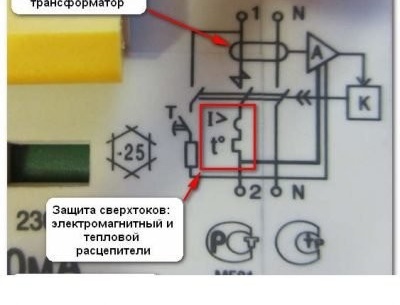
The circuit on the difavtomat case includes a differential transformer, a “TEST” button and releases - electromagnetic and thermal
Marking (rated current)
The rated current is the maximum current that the device can pass through itself for a long time. This characteristic must be indicated on each device, but in slightly different ways:
- only the number is written on the RCD, for example, “16 A”;
- on the difavtomat machine, a number is preceded by a letter, for example, “C16 A”.

On the difavtomat, a letter is added to the number denoting the value of the rated current - most often “B”, “C” or “D”
The letter in front of the rated current value on the body of the difavtomat indicates the characteristic (breaking capacity) of its releases. On household models, you can usually see the letters "B" (for circuits without inductive load, as a rule, lighting), "C" and "D" (they can withstand inrush currents typical for networks with connected motors).
There are also difavtomats with the letters "A" (for networks with a large length of conductors), "K" (used if almost the entire load - 80% - is inductive) and "Z" (for low-current networks, where even short-term overloads are unacceptable). They are mainly used in industry.
Video: how to distinguish a differential machine from an RCD
Possible malfunctions and causes of operation
It is obvious that in the event of a malfunction of an RCD or a difavtomat, as well as a circuit breaker, the lives of users are in danger. Therefore, this issue should be given special attention.
The operability of RCDs - both stand-alone, and included in the unit - can be checked by pressing the "TEST" button. However, it should be borne in mind that such a check is not exhaustive, in other words, complete. RCD can be triggered by pressing this button, but be faulty:
- breaking current may exceed the value specified in the passport;
- the response time can be more than 40 ms (if the device turns off for a long time, the current will cause cardiac fibrillation if a person is injured).
In addition, the proper operation of the TEST button is not sufficient evidence that the device is connected correctly.
In order to guarantee the correct operation of an RCD, it is necessary to connect it and form a test leakage current of a threshold value. Such testing may only be carried out by specialists.
The part of the difavtomat that protects against overload does not have a test button. So to check its serviceability is possible only by short-circuit device or by connecting a device whose power exceeds the permissible. However, during such a check, a user who does not have special equipment will not be able to understand whether the response time corresponds to the value specified in the passport.
Therefore, an important conclusion should be made: the user cannot conduct an exhaustive check of protection devices for serviceability, therefore it is extremely important to avoid acquiring fakes. Get RCDs and difavtomaty only in large, trustworthy stores. If you had to make a purchase in a small store or in the market - at least ask for a certificate.
The simplest versions of electronic RCDs (recall that there are still electromechanical ones) can be serviceable, but inoperative. This situation occurs when the zero wire is broken above the device (or when it is disconnected from the zero bus, which happens more often). The fact is that the amplifier of such an RCD is volatile and is included in the protected circuit in parallel with other loads.
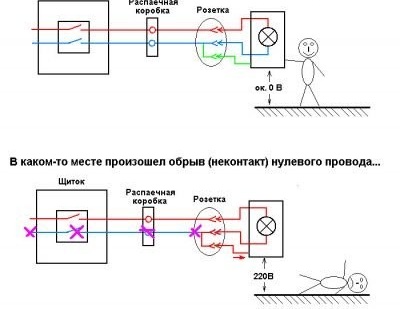
If the neutral wire is broken, a phase appears on all contacts of the devices, so the electronic RCD will not work, and a person can get an electric shock
It is clear that when disconnecting the zero line, not a single electrical appliance, including the amplifier, can work, but at the same time the phase conductor and all current-carrying parts connected to it remain energized.That is, the possibility of electric shock exists, but the electronic RCD will not work and the circuit will not disconnect.
Improved electronic RCDs and difratomata equipped with a safety mechanism are deprived of this drawback. They turn off the device if for any reason the amplifier is left without power.
You should buy just such a device. The most “advanced” of them are able to independently turn on after resuming power supply to the amplifier. Without this function, the difavtomat or RCD will have to be turned on manually each time after turning off the light.
Now a few words about why UZO and difavtomaty can work spontaneously. This is most often explained by several reasons.
Video: how to distinguish a real difavtomat from a fake
Mains leakage
Leaks may occur due to:
- old wiring. If the insulation of the wires cracked from time to time, and in some places even completely fell off (this can often be seen in old houses), then in wet weather the total amount of leakage may well reach the threshold for the operation of an RCD or a difavtomat. Leakage may also occur due to touching insects or small animals that are left without insulation;
- errors during wiring. Carrying out repairs, tenants, as a rule, lay wires on their own and, unknowingly, often violate the installation rules. For example, wires are connected using twists, which are also poorly insulated or not insulated at all (with hidden laying). If the work is done carelessly, the insulation can easily be damaged - a current leak may also periodically occur in such a place;
- connecting the grounding wire to the zero on the protected RCD or the difavtomatom site. Usually, a jumper is installed in the outlet, thus performing a zeroing. When the load is turned on, the protection device will necessarily work: part of the current will go through the grounding conductor, as a result of which the currents passing through the phase and zero poles of the RCD will be different.
The RCD can be triggered if the solution with which the plug with the wire has been laid is not yet dry. The moisture contained in it penetrates the wire through the smallest insulation defects, causing a current leak. It is necessary to wait for the complete drying of the mixture and only then turn on the protection devices.
Incorrect connection of RCD or differential
In order not to make a mistake when connecting a difavtomat or RCD, it is important to understand the principle of operation of this device. He is simple. The main component is a differential transformer, which includes three coils:
- the first and second are respectively included in the phase and zero conductors in such a way that the currents flowing into them have different directions;
- the third is connected directly or through an amplifier to a trip relay.
If the currents on the phase and “zero” lines are equal, then the electromagnetic fields arising in the corresponding coils of the transformer will be equal. Consequently, they will cancel each other out. If the currents differ, a residual electromagnetic field will appear, which will induce the EMF in the third coil, and it will turn off the relay.
Hence the main rule: all the current that enters the circuit to be protected through the phase pole of the RCD / difavtomat, should go out only through its zero pole, and in no case should the current from the side “mix” with it.
Those who imagine the RCD device quite vaguely can make such mistakes:
- The neutral conductor from the protected circuit is connected bypassing the RCD (difavtomat) directly to the common zero bus. It is clear that under such conditions, the field from the current flowing through the phase pole will not be compensated (the zero pole is not connected to anything at all), and when the load is turned on, it will disconnect the circuit.This version of the erroneous connection is called incomplete.
- Often there are several groups of machines in the network, each of which is protected by its own RCD. In this case, an inexperienced installer can connect a “zero” from one group to a neighboring RCD and vice versa. As a result of such an error, both RCDs will be triggered when the load is turned on in any group.
- A similar situation will arise if you connect “zero” from any other load to the “zero” circuit of the protected circuit below the RCD — the additional current will provide a difference to which the circuit breaker will necessarily respond. Such a mistake is not uncommon. Specifically, they do the following: establish a zero bus, to which "zeros" are connected not only from the protected circuit, but also from neighboring ones; Further, the conductor from this bus is brought to the lower (that is, from the load side) zero contact of the RCD.
- Sometimes one of the poles is connected correctly, and the second - vice versa. As a result, currents in the coils of the transformer will flow in one direction, and regardless of their ratio, the device will turn off. To avoid confusion, always connect the wires from the supply line from above (fixed contacts), and from the load side - from below (movable contacts).
For some errors, the “TEST” button will work as if nothing had happened, for others - the difavtomat will not respond to it.
Hence two conclusions:
- do not rely entirely on this mechanism - carefully study the scheme and try to follow it;
- if the connected difavtomat does not work by pressing this button, do not rush to throw it away - it may be a wrong connection.
The residual current setting of the RCD / difavtomat is too low
The thing is that an RCD with a high sensitivity - a set leakage current of 30 mA or lower - if too high currents flow through it, it can falsely work. If you encounter such a problem, you can install a low-sensitivity RCD (fireproof) at the input, and then divide the circuit into several groups with lower rated currents and equip each of them with a switch with acceptable sensitivity.
Which is better - UZO and VA separately or difavtomat
Such a question, no doubt, arises before everyone who has to connect electricity in a house or apartment, since the use of protection devices is mandatory (requirements of the PUE). Each option has both advantages and disadvantages. First, let's evaluate the strengths of difavtomats:
- The size. In the most common case, when the network is single-phase, and the RCD is supposed to use a two-pole, the differential machine will take 2 modules on the DIN rail, while the pair of "RCD + VA" - as many as 3 (2 will be occupied by the RCD). If electric consumers will be divided into several groups, which is done very often, then VA and RCD, respectively, will also require several, which means that a lot of space will be saved when replacing them with a difavtomat. This factor is especially relevant for those users who have to deal with small-sized electrical panels.
- Number of connections and ease of installation. Connecting one device instead of two, although slightly, is still easier. If an inexperienced installer does this, then the likelihood of an error will be lower. But most importantly, the number of connections will decrease, which will positively affect the efficiency and reliability of the system.
But what are the arguments in favor of the use of individual devices:
- Cost. Most manufacturers, known for the high quality of their products, have a difavtomat more expensive than individual RCDs and VAs with the same parameters. You must also consider the cost of replacing the device in case of failure.If, for example, an UZO "sprinkles", then only it will have to be changed. If a module fails at the difavtomat, then the whole device will have to be changed, even if the second module is operational. We repeat that all of the above is a rule only for branded products - among middle and budget manufacturers, this price ratio is far from always observed. For example, a IEK ABDT32 16A / 30mA difavtomat for the company IEK costs 600 rubles, while RCDs of the VD1–63 brand with the same parameters and an automatic switch VA47–29 for 16 A from the same manufacturer cost, respectively, 600 and 35 rubles. But even in this case, although the difference in the cost of the duplicate machine and the “UZO + VA” pair is almost imperceptible, the advantage of the stand-alone devices is obvious: if the overload and short-circuit protection module fails, the replacement of the device will cost 600 rubles., while the failure of a stand-alone VA will require costs of only 35 rubles.
- Convenience of operation. A user who has separate RCDs and VAs installed can easily guess what the matter is in case of an emergency. If the RCD has tripped, then there is a current leak, if VA - there is an overload or short circuit. For the owner of the difavtomat, the problem will not be so obvious, since it is not clear which module worked. Of course, all this applies only to difavtomatov in the simplest version and is not relevant for more modern devices equipped with an RCD trip indicator (special flags). But the release of the latter has not yet been mastered by all manufacturers, and even eminent brands do not have such devices in every series.
So, in each case, one or the other option may be preferable. It all depends on the scheme of the protected network (in particular, on the number of groups), the size of the electrical panel and the specific models of devices on which the user decided to choose.
As for the operating parameters and reliability, then in this respect, RCDs and diflomatomats are identical. Modules of protection against current leakage in difavtomats are also electronic and electromechanical, and likewise, difattomat must be selected by type of leakage current - only for alternating current (AC type), for alternating and pulsating direct current (type A), or for all types of current, including straightened (type B).
Video: RCD or differential machine
How to connect an RCD and a difavtomat together
In the electrical networks of large apartments and private houses, it is usually necessary to use both difattomats and RCDs with circuit breakers. The fact is that electricity consumers at such facilities are usually divided into groups, and to save money, one RCD is installed on several machines - usually no more than three.
At the same time, several RCDs can be connected to one upstream machine. In such conditions, the replacement of a pair of "RCD + VA" with a difavtomat either is too expensive or impossible at all.
In the diagram, the phase is indicated in red, “zero” is blue, grounding is yellow-green.
Sockets are divided into groups (items 2, 3, 4, 5, 6 and 7), each of which is protected by its own automatic machine of type VA (items 8, 9, 10, 15, 16 and 17). All these machines, in turn, are divided into three groups of two, each of which is protected by its own RCD (items 7 and 14). It is clear that the alternative - the installation of six difavtomatov - would be much more expensive.
With the described scheme, you can save money.At the same time, when one of the RCDs is triggered, not all sockets are disconnected, but only a part. A leaky circuit is easily identified. If, for example, the RCD pos. 14, you will need to turn off the machines pos. 15, 16 and 17, then turn on the RCD and turn on the indicated machines one at a time. As soon as the circuit breaker with current leakage is turned on, the RCD will immediately open the contacts again.
There are also several lighting circuits; they are protected by VA automatic machines. 5, 6 and 12. These machines are also connected to one RCD (item 3), which, unlike the "outlet" RCDs 7 and 14, has a differential current setting of 300 mA. There is no point in connecting lighting circuits through sensitive RCDs with a 30 mA leakage current setting that protect against electric shock.
Please note: the RCD of pos. 3 is installed both in front of the lighting machines and in front of the RCD 7 and 14. Thus, it also insures the “outlet” RCDs in case of failure of one of them (although it does not provide protection against electric shock - only from fire).
But on a single dedicated line, laid, say, to a washing machine or computer, installing a difavtomat makes sense, which was done (pos. 13). The current leakage protection module of this unit is also insured in case of failure by an RCD, item 3.
In the above scheme, it would be quite acceptable to replace the input VA (pos. 1) and RCD pos.3 with one difavtomat with the same parameters.
When designing an electrical network with a separate RCD, it is necessary to select its rated current so that it is protected from overloads by higher or lower machines. That is, one of two conditions must be fulfilled: either the rated current of the higher-order VA, or the sum of the rated currents of the lower-order VA must be less than or at least equal to the rated current of this RCD.
A good understanding of the device and the purpose of electrical protection devices should be not only an electrician, but also the average person - the owner of a house or apartment connected to the network. Because the life of this person, as well as other residents, depends on how correctly selected and connected this device is. We hope that our article has helped to thoroughly understand this issue.
